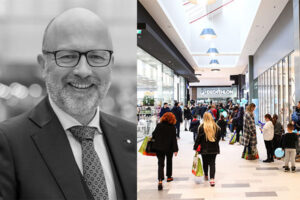By Jörg F. Bitzer
In this context, ECE has evidently now also decided to include a new definition of “turnover.” The new definition of turnover will allow revenues generated online to be considered relevant for advertising contributions and/or turnover rents in the future.
The definition of turnover gets complicated in everyday multimedia life when determining the relationship towards a product purchased online: The question is to what extent a certain purchase can be attributed to a single store. In principle, you can surely say that revenues are attributable to a given store if a customer purchases the goods via that store’s online services and has them sent directly to his or her home or purchases an item online and picks it up in the store.
In general, operators and owners are being forced to become more creative when it comes to leasing models. Ones have been developed in recent times that relate, for example, to the size of a center’s catchment area or the amount of time customers remain within a mall. The rise of increasingly pure “showrooms” has reduced the term “turnover rent” to an absurdity as it is historically defined.
If one looks at the idea of structuring rental prices according to the number of customers who visit and the amount of time they spend in centers—something the ICSC has also discussed—one comes to the conclusion that it may very well be interesting for retailers to receive a rental price reduction or a reduction in further costs from a turnover rent in exchange for them providing an outstanding advertising and market presence. On the whole, such a tenant’s activity can effect positive change for the whole center and bring about an increase in frequency. Shopping center operators, in turn, can provide further support by ie renting to public bodies or leisure providers like health or sports facilities that generate additional frequency.
With regard to calculations according to actual purchases made in shopping centers, there is also agreement that, while it is indeed the task of the owner/operator to get the customers into the center, it is up to the retailers to get the customers to buy. Since not every customer guarantees and generates sales for every retailer, tenants often push back against including such a parameter in the rental agreement. The two sides most likely will only agree on such a new rental model if retailers could define a customer profile that fits their target and was accepted by the owner or operator. Because the link between online and offline stores is becoming more accurate thanks to technical developments, some operators want to integrate a performance-based rental component into contracts based on this possibility.
With all these new leasing models, however, the owner or center manager must remain active. They must use the advertising contributions provided by the tenants in conjunction with a new rent or sales definition to create an attractive shopping environment and provide appropriate frequency. Once the operator has managed to lure customers into the center, it is up to the product, the price, and/or the service offered by the retailers to generate the factual sales. Without customers, which generate revenues directly in stores, the new rental options are pointless—at least for retailers. Owners must therefore invest in innovative concepts and increase retailers’ willingness to think about new alternative forms of rental models.
What is your opinion on this topic? Discuss it with us! Send your opinion to opinion@across-magazine.com !






